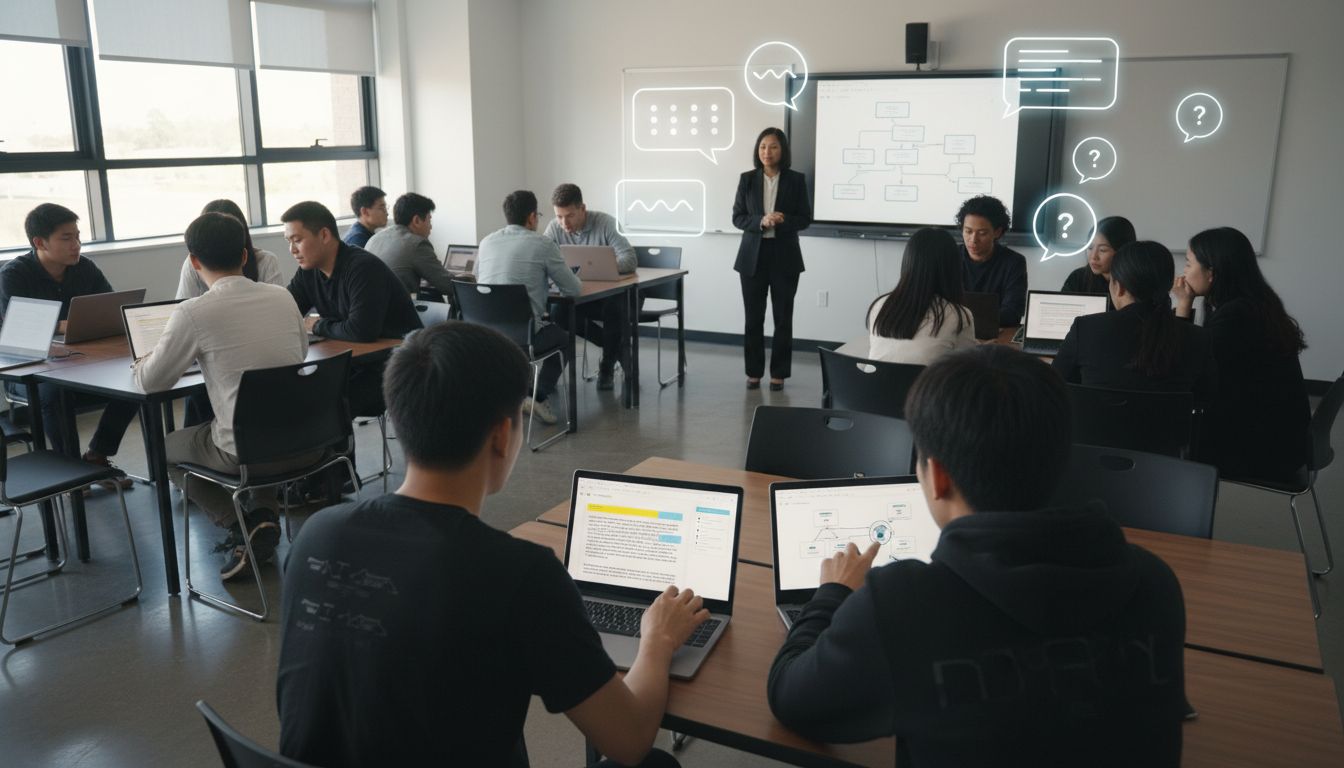Role of Summaries in Education: Complete Guide

More than 80 percent of students struggle to retain information from lengthy readings or lectures. Summarization stands out as an essential skill for making sense of dense educational material and turning it into clear, lasting knowledge. By mastering effective summary techniques, learners and professionals can process complex content faster, boost comprehension, and sharpen critical thinking in any academic or professional setting.
Table of Contents
- Defining Summaries In Educational Contexts
- Types Of Educational Summaries And Their Uses
- How Summaries Enhance Learning Efficiency
- Best Practices For Video-Based Summarization
- Common Challenges And How To Overcome Them
Key Takeaways
| Point | Details |
|---|---|
| Summarization as a Cognitive Tool | Summaries enhance comprehension and retention by distilling complex information into key insights. |
| Types of Educational Summaries | Different summary types, such as abstracts and executive summaries, serve unique purposes in academic and business contexts. |
| Enhancing Learning Efficiency | Summarization fosters active engagement with material, promoting memory consolidation and critical thinking skills. |
| Challenges in Summarization | Common difficulties include managing redundancy and maintaining context; strategic solutions focus on clarity and relevance. |
Defining Summaries in Educational Contexts
Summaries serve as powerful cognitive tools that transform complex information into digestible, memorable insights. According to LINCS, summarization in education is the strategic process of condensing information to its most essential points, enabling better comprehension and knowledge retention.
At its core, summarization is a sophisticated cognitive skill that requires readers to analyze, extract, and reframe key information. As research from ERIC explains, this process involves recognizing significant content elements, eliminating peripheral details, and skillfully paraphrasing the central ideas. Effective summaries are not mere reductions but intelligent reconstructions that capture the original text’s substantive meaning.
Key characteristics of educational summaries include:
- Capturing main ideas without losing critical context
- Demonstrating comprehension through precise rephrasing
- Reducing lengthy content to concise, accessible formats
- Facilitating faster learning and information processing
Creating a robust summary requires several nuanced cognitive skills. Students must critically evaluate information, distinguish between primary and secondary content, and reconstruct knowledge in their own intellectual framework. Learn more about creating engaging educational summaries.
Types of Educational Summaries and Their Uses
Educational summaries are versatile tools with diverse applications across learning environments. According to research from ERIC Files, these summaries can be categorized into distinct types, each serving unique purposes in knowledge acquisition and communication.
Abstracts represent concise overviews that capture the essence of academic papers, research studies, or complex documents. Executive summaries, as defined by Wikipedia, are brief documents that distill longer reports into key insights, allowing readers to quickly understand main points without reading entire texts.
Key types of educational summaries include:
Here’s a comparison of the main types of educational summaries:
| Summary Type | Primary Purpose | Typical Use Case |
|---|---|---|
| Abstract | Brief overview of key concepts | Academic papers Research studies |
| Executive Summary | Highlights insights and recommendations | Business reports Project proposals |
| Multi-document Summary | Synthesizes information from several sources | Literature reviews Comparative analyses |
| Lecture Summary | Condenses spoken or video content | Classroom notes Online lectures |
- Multi-document summaries: Synthesizing information from multiple sources
- Lecture summaries: Condensing classroom or video lecture content
- Research abstracts: Providing compact overviews of scholarly work
- Report executive summaries: Highlighting critical findings and recommendations
Understanding these summary types enables students and professionals to process information more efficiently. Selecting the right summary approach depends on the context, audience, and depth of information required.

Explore seven effective ways to create insightful summaries to enhance your learning and communication strategies.
How Summaries Enhance Learning Efficiency
Summaries are powerful cognitive tools that dramatically transform the learning process. According to LINCS, writing summaries helps learners comprehend and retain information by focusing on and connecting critical ideas, which directly improves reading and writing skills.
Research demonstrates that the act of summarization is more than a simple note-taking technique—it’s an active learning strategy. As ERIC Files explains, summarization requires learners to select important information, organize it coherently, and express it in their own words, thereby enhancing both comprehension and memory retention.
Key learning efficiency benefits of summaries include:
- Cognitive Processing: Forces active engagement with material
- Information Filtering: Helps distinguish between essential and peripheral content
- Memory Consolidation: Transforms passive reading into an active learning experience
- Critical Thinking: Develops analytical skills by requiring deep content evaluation
Understanding how summaries aid learning reveals that this technique is not just about brevity, but about creating meaningful mental connections that transform information into lasting knowledge.
Best Practices for Video-Based Summarization
Video-based summarization requires a strategic approach to transform lengthy content into concise, meaningful insights. According to research from arXiv, an effective method involves a divide-and-conquer strategy that breaks down long video content into smaller, more manageable sections, allowing for systematic summarization of each segment before integrating them into a comprehensive overview.
Process-oriented summarization techniques have revolutionized how we approach complex video content. arXiv highlights that modern summarization methods focus on systematically extracting and condensing information, significantly reducing the cognitive effort required to process large volumes of video material.
Key best practices for video-based summarization include:
- Segment Breakdown: Divide videos into logical content sections
- Key Moment Identification: Recognize and extract the most critical information
- Context Preservation: Maintain the original narrative flow and essential context
- Concise Reconstruction: Reframe content succinctly without losing core meaning
Understanding the benefits of video summarization reveals that this approach is not just about shortening content, but about creating intelligent, accessible knowledge that respects the viewer’s time and learning goals.
Common Challenges and How to Overcome Them
Summarization is a complex cognitive process fraught with intricate challenges. According to research from arXiv, the primary obstacles include managing redundancy, ensuring relevance, and maintaining informativeness—challenges that require sophisticated theoretical models of importance to effectively navigate.
In multi-document contexts, the complexity multiplies exponentially. As Wikipedia explains, information overload becomes a significant hurdle, necessitating strategies that organize information around key aspects, represent diverse perspectives, and maintain clear structural integrity in the final summary.
Key challenges and strategic solutions include:
- Redundancy Management: Eliminate repetitive information while preserving unique insights
- Relevance Filtering: Develop precise criteria for identifying core content
- Contextual Preservation: Maintain the original narrative’s essential meaning
- Complexity Reduction: Transform complex information into accessible insights
Understanding why summarizing videos matters reveals that overcoming these challenges is not just a technical exercise, but an art of intelligent information distillation that transforms raw content into meaningful knowledge.
Maximize Your Learning with Smart Video Summaries
The article highlights the challenges of processing and summarizing educational content, especially from videos and multi-source documents. If you have faced information overload or struggled to create concise, meaningful summaries from lengthy lectures or webinars, your goal is clear: save time while gaining deeper understanding. Concepts like “cognitive processing,” “key moment identification,” and “context preservation” reflect exactly the hurdles many learners and professionals experience.

Take control of your video-based learning journey with SummYT, an AI-powered YouTube summarizer crafted to turn long lectures, tutorials, and interviews into clear, crisp summaries. With SummYT, you get key insights that reflect the article’s emphasis on effective summarization without losing critical context. Whether you are a student, researcher, or lifelong learner, enjoy unlimited summaries, multilingual support, and one-click access through our browser extension. Don’t waste hours when the key learnings can come to you in minutes. Discover how summarizing videos can boost your productivity and deepen your knowledge today by visiting SummYT. Explore more on how to create educational video summaries and why summarizing videos matters to empower your study and work habits.
Frequently Asked Questions
What is the purpose of summarization in education?
Summarization in education aims to condense complex information into essential points, improving comprehension and knowledge retention for learners.
What are the key types of educational summaries?
The main types of educational summaries include abstracts, executive summaries, multi-document summaries, and lecture summaries, each serving unique purposes in knowledge acquisition.
How do summaries enhance learning efficiency?
Summaries enhance learning efficiency by promoting active engagement with material, filtering important information, aiding memory retention, and developing critical thinking skills.
What are some best practices for summarizing video content?
Best practices for video summarization include breaking videos into segments, identifying key moments, preserving context, and reconstructing content succinctly without losing core meanings.



